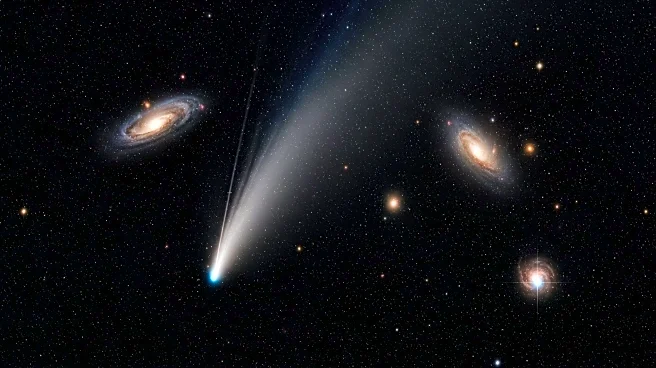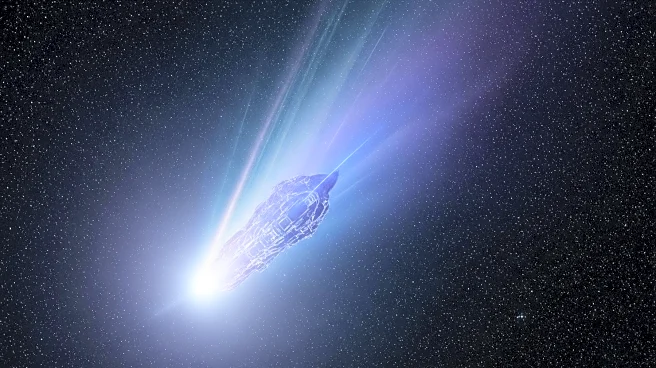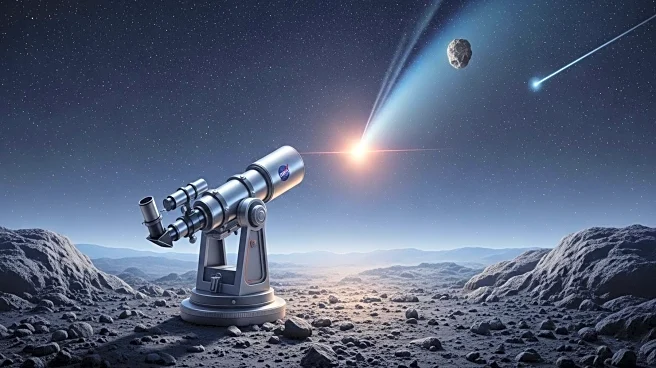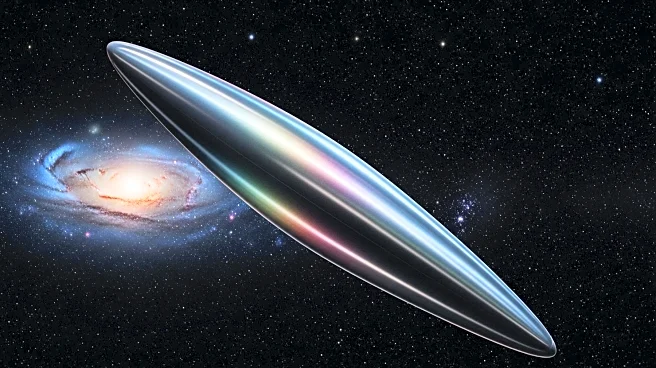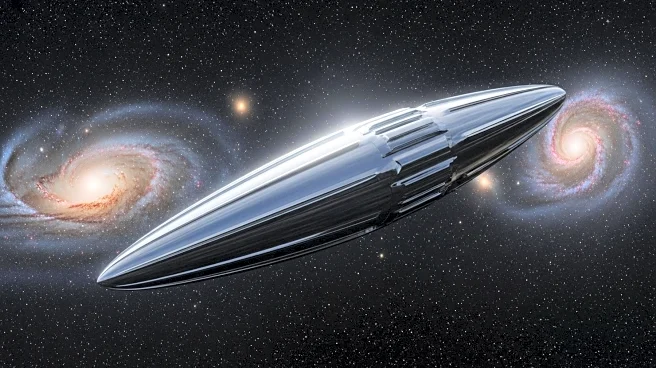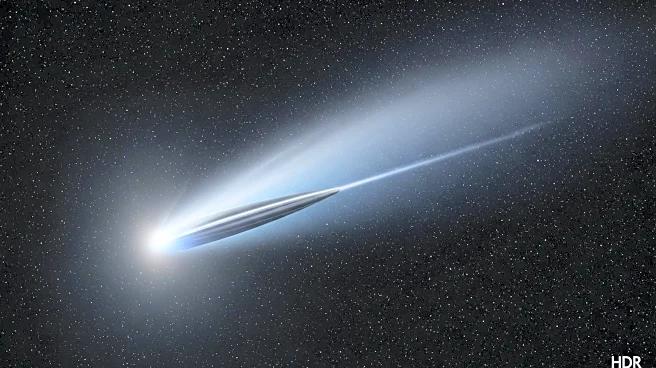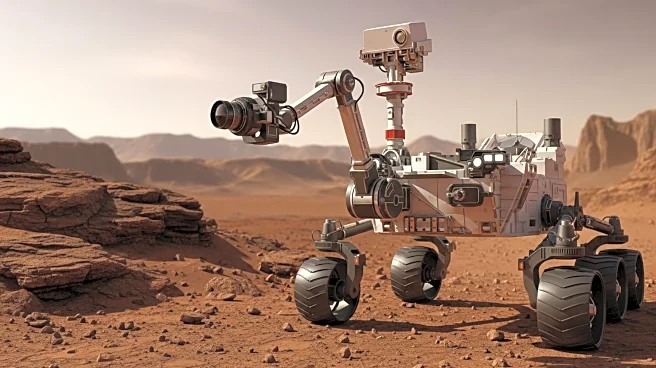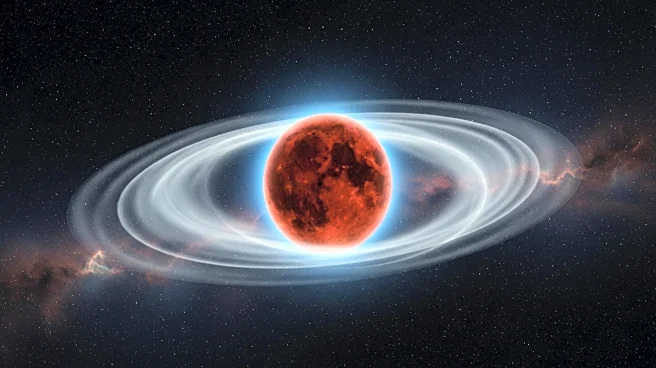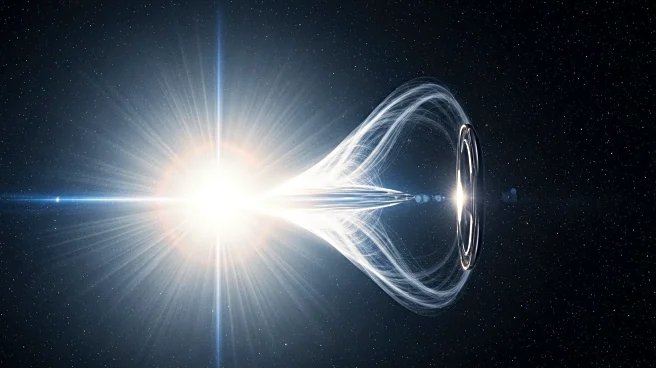What's Happening?
A recent study has revealed that the interstellar comet 3I/ATLAS is significantly larger than previously observed interstellar objects, such as 'Oumuamua and Borisov. The research, conducted by Richard Cloete, Peter Vere, and Harvard astronomer Avi Loeb, indicates that 3I/ATLAS could be up to three miles long, making it orders of magnitude more massive than its predecessors. The study utilized over four months of optical measurements and data from the James Webb Space Telescope, suggesting that the comet's nucleus has a minimum diameter of five kilometers. This finding challenges existing expectations about the size and mass of interstellar objects.
Why It's Important?
The discovery of 3I/ATLAS's massive size has significant implications for our understanding of interstellar objects. It suggests that such large objects may be more common than previously thought, prompting a reevaluation of current models of planetary system debris. The comet's size and mass also raise questions about its composition and origin, with some researchers speculating about the possibility of it being more than just a natural comet. This finding could lead to new insights into the nature of interstellar space and the types of objects that traverse our solar system.
What's Next?
As 3I/ATLAS approaches Mars on October 3, further observations are expected to provide additional data on its characteristics. NASA's Mars Reconnaissance Orbiter and Juno spacecraft may offer new insights into the comet's surface area and composition. These observations could help refine our understanding of interstellar objects and their behavior. The study's findings also open the door to further research into the potential technological origins of such objects, although this remains a controversial hypothesis.
Beyond the Headlines
The study of 3I/ATLAS highlights the challenges and opportunities in understanding interstellar objects. The comet's unusual mass and trajectory have sparked debates about its nature, with some researchers considering the possibility of it being an object of technological origin. This underscores the need for continued exploration and observation to unravel the mysteries of interstellar space. The findings also emphasize the importance of international collaboration in space research, as data from multiple observatories worldwide contributed to the study.

